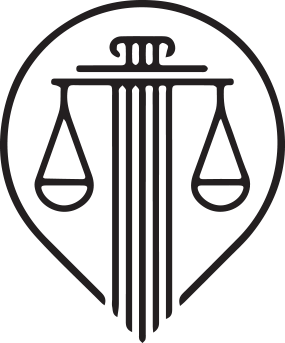Discharge Student Debt: Forever Rid Yourself of Student Loan Debt and Be Free
In recent times, the burden of student loan debt has weighed heavily on countless individuals. Many have found themselves searching for a way to escape the seemingly never-ending cycle of loan repayments. Fortunately, the Department of Justice (DOJ), in collaboration with the Department of Education (ED), has introduced a new guidance that could significantly increase the chances of discharge student debt through bankruptcy. In this comprehensive guide, we will explore the significance of this new guidance, its scope and limitations, and provide a step-by-step process for completing the Attestation Form, a key element in seeking to discharge student debt.
Discharge Student Debt: Clearing the Path to Debt Relief
The process to discharge student debt through bankruptcy has traditionally been a challenging and intrusive one, often requiring extensive personal information from debtors. However, the new guidance aims to change this by establishing clear, transparent, and consistent expectations for discharge while simplifying the process. Its primary goals include reducing the burdens on debtors and increasing the number of cases in which the ED supports a discharge.
Discharge Student Debt: A Three-Part Test
To achieve these goals, the guidance introduces a more objective framework for applying the three-part test that courts use to determine undue hardship:
- Present Circumstances: The IRS Collection Financial Standards are used to assess whether the debtor cannot repay the student loans while maintaining a minimal standard of living.
- Future Circumstances: There is a presumption that the debtor’s inability to repay will persist under certain circumstances.
- Good Faith: Objective criteria are used to evaluate the debtor’s good faith in handling their student loans.
Discharge Student Debt: Scope and Limits of the New Guidance
Settlements and Beyond
The guidance is designed to facilitate settlements between ED and bankruptcy debtors, allowing for the discharge of student loans. However, it’s important to note that if a pre-trial settlement cannot be reached, the guidance’s standards do not bind the positions that DOJ or ED may take later in litigation or the bankruptcy court’s decision on the discharge proceeding.
Applicability
The guidance applies to Direct Loans and other loans held by ED but not to FFEL loans held by guarantors or Perkins Loans still held by the school. It also does not apply to holders of private student loans. Nevertheless, a successful undue hardship discharge of federal loans may put pressure on private loan holders to follow suit.
Pending Proceedings
The guidance applies to “bankruptcy proceedings” pending on or after November 17, 2022, and to future bankruptcy proceedings. Reopening closed cases is not necessary; instead, considering filing a new case with an undue hardship adversary proceeding may be an alternative.
Discharge Student Debt: Step One: Initiating an Adversary Proceeding
The first step in seeking a student loan discharge under the new guidance is to initiate an adversary proceeding within the bankruptcy case. An adversary proceeding is essentially a lawsuit filed by submitting an adversary complaint, subject to bankruptcy rules similar to the Federal Rules of Civil Procedure.
Necessary Forms
Debtors can find a sample undue hardship adversary complaint in NCLC’s Consumer Bankruptcy Law and Practice. Importantly, there is no filing fee for the debtor’s adversary complaint.
Listing Student Loans
The adversary complaint should list all student loans owed by the debtor. Debtors can obtain a comprehensive list from their National Student Loan Data System (NSLDS) report. The complaint must be served on ED using the method specified in Bankruptcy Rule 7004(b)(5).
Discharge Student Debt: Step Two: Follow-Up to the Adversary Proceeding Complaint
After filing the adversary proceeding, the Assistant United States Attorney (AUSA) representing ED should request a litigation report from ED, which includes the debtor’s account history, loan details, and educational history. This information is vital for evaluating the debtor’s situation.
Requesting Information
Debtor attorneys should request this information from the AUSA if it is not routinely provided. This data can be valuable for preparing the Attestation form or supplementing an already submitted one.
Discharge Student Debt Step Three: Getting Familiar with the Attestation Form and When to Submit It
The guidance settlement process hinges on the debtor submitting a completed 15-page Attestation Form to the DOJ. This form contains crucial information about the debtor’s financial circumstances, inability to repay, and good faith efforts to make payments on student loans.
Submission Details
Debtor attorneys should establish contact with local AUSAs handling undue hardship cases to inquire about the preferred method and timing for Attestation submission. Some AUSAs may accept it soon after the adversary proceeding is filed.
The Attestation Form
The Attestation Form includes various sections, each addressing specific aspects of the debtor’s financial situation. Here, we’ll delve into Lines 1–9, covering basic personal and loan information.
Discharge Student Debt Step Four: Indicating Income on the Attestation Form (Lines 11–13)
To assess the debtor’s present ability to repay student loans while maintaining a minimal standard of living, income and expenses must be detailed on the Attestation Form.
Reporting Income
Household gross income, including Social Security and unemployment benefits, is reported on Line 11. Debtors can use amounts from Schedule I if filed no more than 18 months before completing the Attestation. Line 12 indicates the method of employment income verification, and Line 13 requires information on non-employment income verification.
Discharge Student Debt Step Five: Indicating Expenses on the Attestation Form (Lines 14, 15, and 17)
Lines 14, 15, and 17 of the Attestation Form focus on detailing the debtor’s expenses to determine whether they can maintain a minimal standard of living while repaying student loans.
Expense Categories
Line 14(a) allows the debtor to indicate whether their expenses are below set dollar amounts for various categories based on IRS National Standards. If actual expenses exceed these standards, the debtor can report them on Line 14(c) with an explanation.
Housing, Utilities, and Transportation
Lines 15(d) and 15(e) focus on actual expenses for housing and transportation, considering IRS Local Standards. The debtor can explain additional expenses on Line 15(f)(viii).
Additional Expenses
The debtor can list other necessary expenses on Line 15(f) if they are not deducted from their pay. Examples include alimony, child support, health insurance, and more.
Discharge Student Debt Step Six: The Debtor’s Present Ability to Pay the Student Loan (Line 16)
Line 16 calculates the monthly remaining or net income by deducting allowable expenses from gross income. If this amount is $0 or less, it signifies a present inability to repay the student loan.
Monthly Payment Amount
The monthly payment amount is typically based on a ten-year “standard” repayment plan for the loan. Consultation with ED is advised to determine the correct monthly payment.
Loan Details
Line 6 requires listing the current monthly payment amount, total balance, and interest rate for each loan. These details can be found on the NSLDS report.

Discharge Student Debt Step Seven: Future Income and Expenses (Lines 18–20)
To evaluate future circumstances, debtors must provide information on their projected income, expenses, and changes that could affect their ability to repay the student loan.
Changes in Income
Line 18 allows debtors to explain any expected changes in their income over the next five years.
Changes in Expenses
Line 19 covers changes in expenses. This is crucial for showing that present inability to repay will persist.
Certification of Future Inability
Line 20 requires certification of future inability to repay.
Discharge Student Debt Step Eight: Good Faith Efforts (Lines 21–23)
Demonstrating good faith is critical for securing a discharge. Lines 21–23 assess the debtor’s efforts to repay the student loans and their willingness to use available programs.
Repayment Efforts
Line 21 focuses on the debtor’s actions to repay student loans. Any additional information regarding hardship deferments, forbearances, or attempts to rehabilitate loans should be included.
Use of Programs
Line 22 inquires whether the debtor has taken advantage of available loan repayment and forgiveness programs.
Knowledge of Alternatives
Line 23 verifies that the debtor was informed about loan forgiveness, discharge, or income-driven repayment plans.
Discharge Student Debt Step Nine: Certification, Signature, and Attorney Attestation (Lines 24–30)
The final section of the Attestation Form includes certifications, signatures, and an attorney attestation. These sections ensure that all information provided is accurate and complete.
Debtor Certification
Lines 24–26 require the debtor’s certification that the information provided is true, accurate, and complete.
Attorney Attestation
Line 28 is for the attorney to attest that they’ve explained the consequences of submitting the Attestation to the debtor. Line 29 is for the attorney’s certification of the debtor’s ability to understand the information.
Signatures
Both the debtor and attorney must sign and date the form on Lines 27 and 30.
Discharge Student Debt: Step Ten: Submission and Review
Once the Attestation Form is complete and signed by both the debtor and attorney, it should be submitted to the DOJ and served on ED.
Mailing Address
Debtors should contact the local AUSA for the appropriate mailing address or submission method.
Review Process
The DOJ will review the Attestation Form and may request additional information or documentation. It’s crucial for debtors and their attorneys to promptly respond to any requests to expedite the review process.
Discharge Student Debt Conclusion
The new guidance from the DOJ and ED provides a hopeful path for those seeking to discharge their student loan debt through bankruptcy. By simplifying the process and establishing clear standards for undue hardship, more debtors may find relief from their student loan burdens. However, navigating this process can still be complex, so it’s essential to consult with experienced bankruptcy attorneys and follow the guidance closely to maximize the chances of a successful discharge.
Conclusion about Taxes in Bankruptcy
To navigate the complexities of student loan debt discharge in bankruptcy and ensure you make the right choices, it’s crucial to consult with experienced professionals. Contact the attorneys at Dahlberg Law Group, including Attorney Steve Eichsteadt, for expert guidance and a fresh financial start. Call 262-677-8999 for a FREE tax debt relief consultation today. Don’t let student loan debt debt hold you back—embrace the opportunity to break free and regain control of your financial future.

